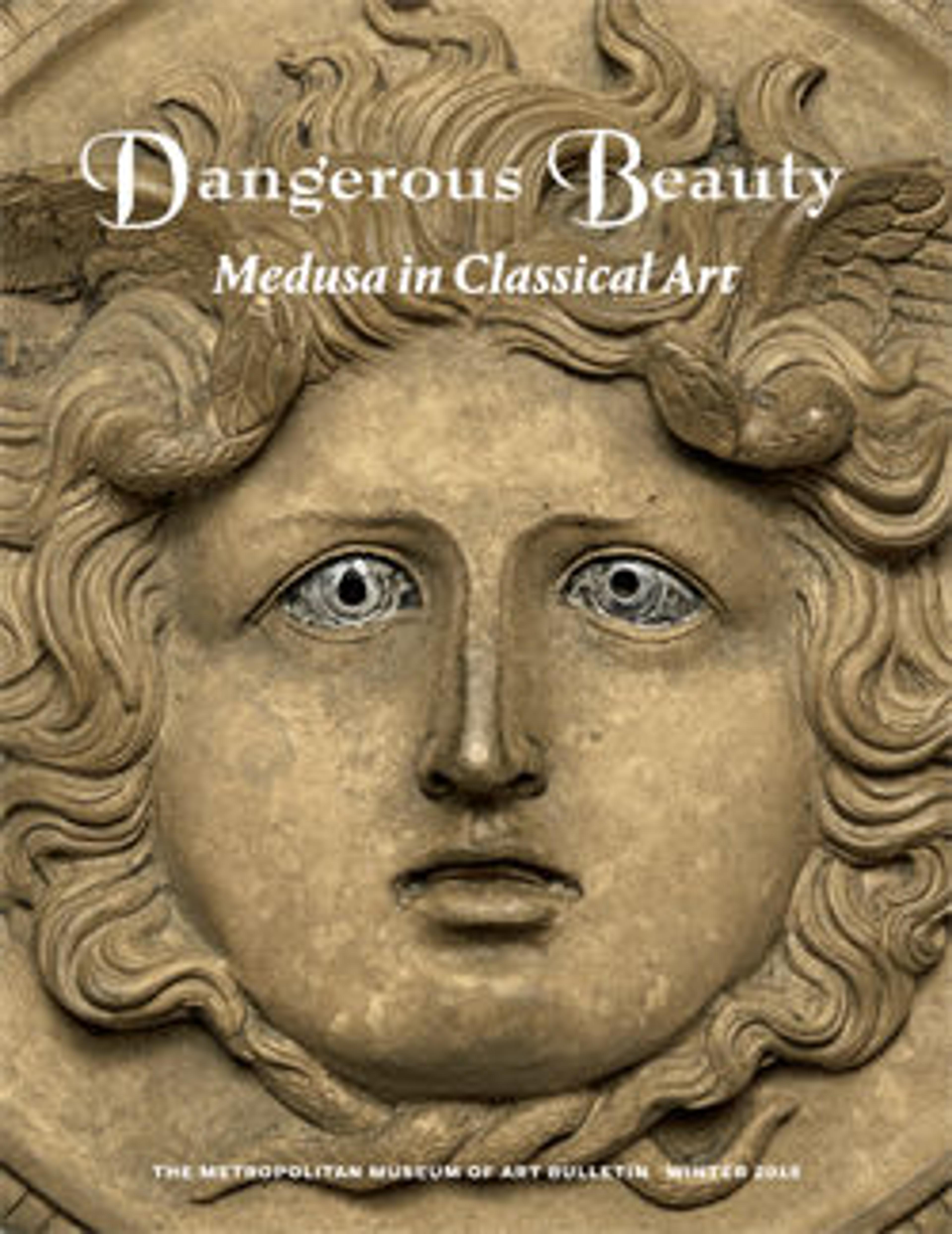Terracotta pelike (jar)
Obverse, Perseus beheading the sleeping Medusa
Reverse, King Polypeithes between two women
King Polydektes sent Perseus to obtain the head of the Gorgon Medusa, a monstrous, snaky-haired, winged creature with glaring eyes whose gaze turned beholders to stone. Perseus accomplished his mission with the help of Athena, Hermes and the Nymphs, and returned to the island of Seriphos whence he had set out. By the mid-fifth century B.C., the story and the motif of the Gorgon's head had become popular in Attic art. Perseus looks unwaveringly at his protectress, Athena as he is about to behead the sleeping Medusa. The rendering here is unusual, however, because it is one of the earliest in which Medusa's face is that of a beautiful young woman. Another important feature here, although not longer readily visible, is that rays surround the hero's head, indicating special stature or power.
Compared with the movement and detail on the obverse, the reverse shows a grand and quiet scene of a king—who is not otherwise known—between two women holding the standard offering utensils.
Polygnotos was a rather current name in classical Athens. It is most often associated with Polygnotos of Thasos who painted large-scale wall paintings in Athens and Delphi that are described in ancient literary sources.
Reverse, King Polypeithes between two women
King Polydektes sent Perseus to obtain the head of the Gorgon Medusa, a monstrous, snaky-haired, winged creature with glaring eyes whose gaze turned beholders to stone. Perseus accomplished his mission with the help of Athena, Hermes and the Nymphs, and returned to the island of Seriphos whence he had set out. By the mid-fifth century B.C., the story and the motif of the Gorgon's head had become popular in Attic art. Perseus looks unwaveringly at his protectress, Athena as he is about to behead the sleeping Medusa. The rendering here is unusual, however, because it is one of the earliest in which Medusa's face is that of a beautiful young woman. Another important feature here, although not longer readily visible, is that rays surround the hero's head, indicating special stature or power.
Compared with the movement and detail on the obverse, the reverse shows a grand and quiet scene of a king—who is not otherwise known—between two women holding the standard offering utensils.
Polygnotos was a rather current name in classical Athens. It is most often associated with Polygnotos of Thasos who painted large-scale wall paintings in Athens and Delphi that are described in ancient literary sources.
Artwork Details
- Title:Terracotta pelike (jar)
- Artist:Attributed to Polygnotos
- Period:Classical
- Date:ca. 450–440 BCE
- Culture:Greek, Attic
- Medium:Terracotta; red-figure
- Dimensions:H. 18 13/16 in. (47.8 cm)
diameter 13 1/2 in. (34.3 cm) - Classification:Vases
- Credit Line:Rogers Fund, 1945
- Object Number:45.11.1
- Curatorial Department: Greek and Roman Art
Audio
835. Kids: Terracotta Pelike (jar)
0:00
0:00
We're sorry, the transcript for this audio track is not available at this time. Please email info@metmuseum.org to request a transcript for this track.
More Artwork
Research Resources
The Met provides unparalleled resources for research and welcomes an international community of students and scholars. The Met's Open Access API is where creators and researchers can connect to the The Met collection. Open Access data and public domain images are available for unrestricted commercial and noncommercial use without permission or fee.
To request images under copyright and other restrictions, please use this Image Request form.
Feedback
We continue to research and examine historical and cultural context for objects in The Met collection. If you have comments or questions about this object record, please contact us using the form below. The Museum looks forward to receiving your comments.
